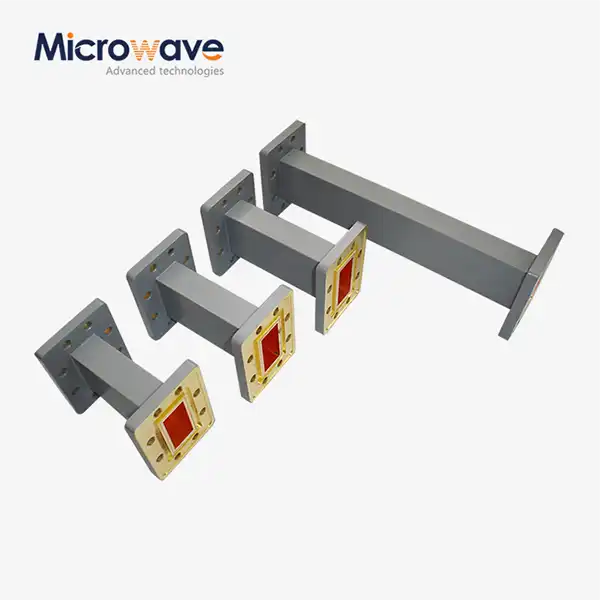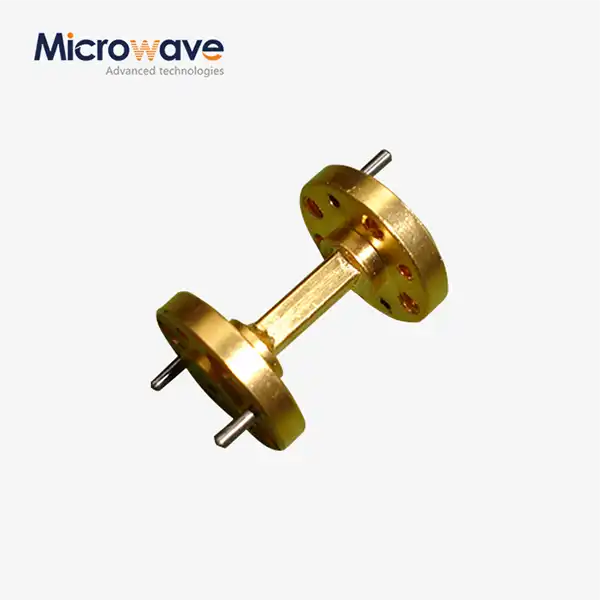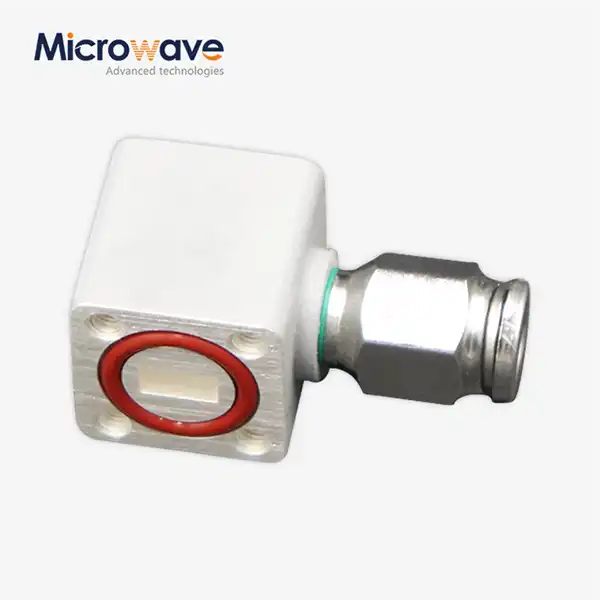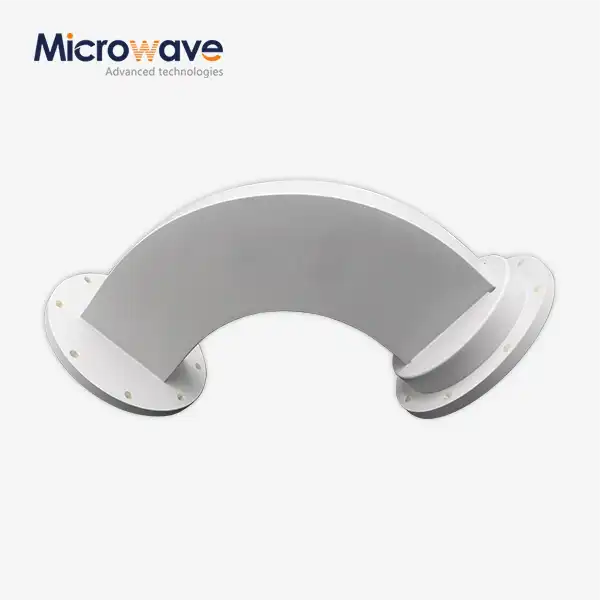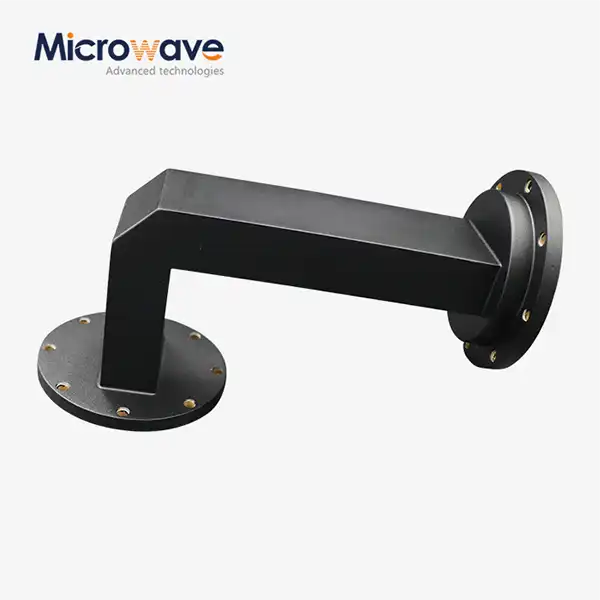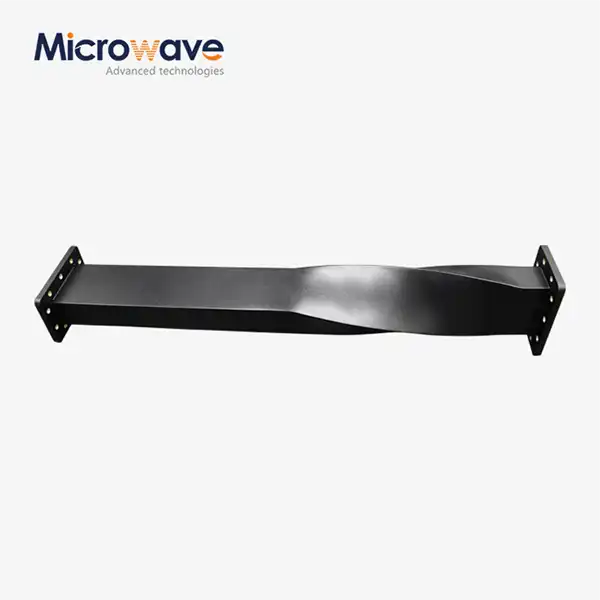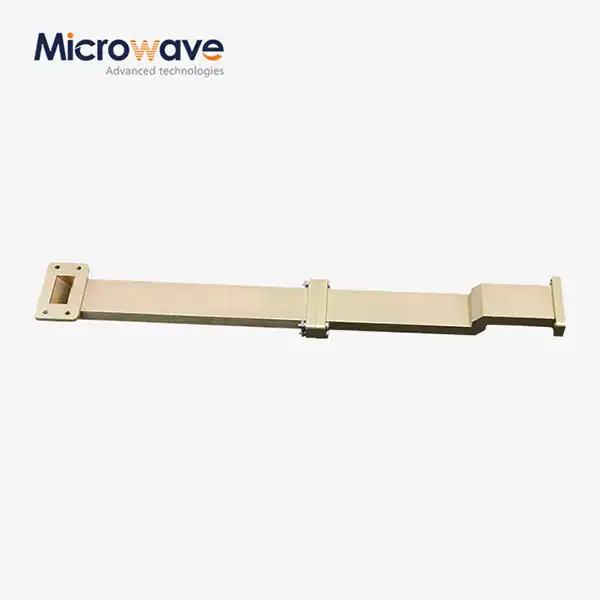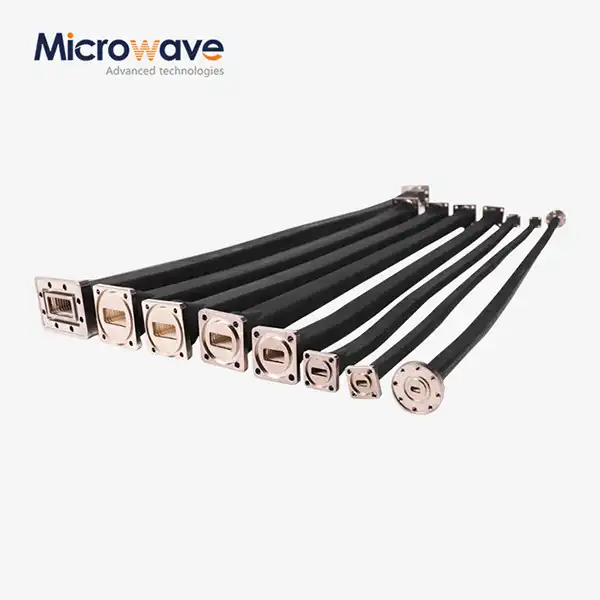What Are the Key Benefits of Using a Water-cooled Twist Waveguide in Telecom Base Stations?
Modern telecommunications infrastructure demands robust, reliable components that can handle high-power transmission while maintaining signal integrity. The Water-cooled Twist Waveguide represents a breakthrough in microwave transmission technology, combining advanced thermal management with precision engineering to deliver exceptional performance in telecom base stations. These innovative components address critical challenges in high-frequency signal transmission, including heat dissipation, signal loss minimization, and operational reliability under demanding conditions. By integrating water-cooling systems with flexible waveguide designs, these solutions enable telecom operators to achieve superior performance while extending equipment lifespan and reducing maintenance costs in their network infrastructure.
Superior Thermal Management for Enhanced Performance
Advanced Cooling Technology Integration
The Water-cooled Twist Waveguide incorporates a sophisticated cooling system that fundamentally transforms how high-power microwave equipment manages thermal challenges. The integrated water-cooling mechanism features precisely engineered channels that allow coolant circulation throughout the waveguide structure, effectively removing heat generated during high-power transmission operations. This advanced cooling technology prevents the formation of hot spots that could degrade signal quality or cause component failure, ensuring consistent performance even under extreme operating conditions. The cooling system operates by circulating water or specialized coolant through dedicated channels, creating a continuous heat exchange process that maintains optimal operating temperatures. This thermal management capability is particularly crucial in telecom base stations where equipment must operate continuously at high power levels while maintaining stringent performance standards. The Water-cooled Twist Waveguide design enables operators to push their systems to higher power levels without compromising reliability or signal integrity.
Temperature Stability and Equipment Longevity
Temperature fluctuations in microwave components can significantly impact performance and accelerate component degradation, making thermal stability a critical factor in telecom infrastructure design. The Water-cooled Twist Waveguide excels in maintaining consistent operating temperatures, which directly translates to enhanced equipment longevity and reduced maintenance requirements. The cooling system effectively manages thermal stress that would otherwise cause material expansion and contraction cycles, potentially leading to mechanical failures or performance degradation over time. By maintaining stable temperatures, these waveguides preserve the dimensional accuracy required for optimal electromagnetic performance while preventing the thermal cycling that can cause fatigue in traditional waveguide materials. This temperature stability is particularly beneficial in outdoor base station applications where ambient temperature variations can be extreme, from scorching summer heat to freezing winter conditions. The Water-cooled Twist Waveguide design ensures that internal component temperatures remain within optimal ranges regardless of external environmental conditions, providing operators with predictable performance and extended service life.
Heat Dissipation Efficiency in High-Power Applications
High-power telecom applications generate substantial amounts of heat that must be efficiently managed to prevent system failures and maintain optimal performance. The Water-cooled Twist Waveguide addresses this challenge through its superior heat dissipation capabilities, which far exceed those of traditional air-cooled or passive cooling systems. The water-cooling system can handle heat loads that would overwhelm conventional cooling methods, enabling base stations to operate at higher power levels while maintaining safe operating temperatures. This enhanced heat dissipation capability is achieved through the high thermal conductivity of water compared to air, combined with the forced circulation that ensures consistent heat removal throughout the waveguide structure. The cooling system design incorporates flow optimization to maximize heat transfer efficiency while minimizing pressure drops that could affect system performance. In practical applications, this superior heat dissipation allows telecom operators to increase transmit power levels, extend coverage areas, and improve signal quality without the thermal limitations that constrain conventional waveguide systems. The Water-cooled Twist Waveguide thus enables more aggressive system configurations that deliver enhanced network performance.
Optimized Signal Transmission and Minimal Loss
Precision Engineering for Signal Integrity
Signal integrity is paramount in telecommunications applications, where even minor losses can significantly impact network performance and coverage quality. The Water-cooled Twist Waveguide achieves exceptional signal integrity through precision manufacturing processes that ensure tight dimensional tolerances and consistent electromagnetic properties throughout the waveguide structure. The manufacturing precision extends to the cooling system integration, where water channels are positioned and designed to minimize any potential interference with electromagnetic field patterns. This meticulous attention to detail results in waveguides that maintain their electrical characteristics even under varying thermal conditions, ensuring predictable performance across the entire operating range. The precision engineering also encompasses the twist mechanism, which allows for flexible installation configurations without compromising signal transmission quality. Advanced measurement and testing procedures, including validation in controlled environments up to 110 GHz, verify that each Water-cooled Twist Waveguide meets stringent performance specifications before deployment. This level of precision engineering ensures that telecom operators can rely on consistent, high-quality signal transmission that meets the demanding requirements of modern wireless networks.
Low Insertion Loss Characteristics
Insertion loss is a critical parameter in waveguide performance, directly affecting signal strength and overall system efficiency. The Water-cooled Twist Waveguide demonstrates exceptionally low insertion loss characteristics, achieved through optimized internal geometry and high-quality materials that minimize electromagnetic field disturbances. The cooling system integration is carefully designed to avoid creating discontinuities or impedance mismatches that could increase insertion loss, maintaining the smooth electromagnetic field transitions essential for efficient signal propagation. The use of high-conductivity materials, such as copper alloys, combined with precision manufacturing techniques, ensures that surface currents flow smoothly without encountering resistance variations that could convert electromagnetic energy to heat. This low-loss design is particularly important in telecom applications where signals must travel through multiple components before reaching antennas or other transmission elements. The Water-cooled Twist Waveguide's ability to maintain low insertion loss even at high power levels and elevated temperatures provides telecom operators with improved system efficiency and enhanced signal coverage. The combination of thermal management and low-loss design creates a synergistic effect that maximizes both power handling capability and transmission efficiency.
High-Frequency Performance Capabilities
Modern telecommunications increasingly relies on higher frequency bands to achieve greater data throughput and improved spectrum efficiency. The Water-cooled Twist Waveguide excels in high-frequency applications, supporting operational frequencies up to 110 GHz while maintaining excellent electrical performance characteristics. This high-frequency capability is achieved through careful attention to dimensional accuracy and surface finish quality, both critical factors that become increasingly important as frequency increases. The cooling system design takes into account the skin effect and other high-frequency phenomena to ensure that thermal management does not interfere with electromagnetic performance at these elevated frequencies. The waveguide's ability to maintain consistent impedance and low loss at high frequencies makes it ideal for advanced 5G applications and future 6G technologies that will operate in millimeter-wave frequency bands. The Water-cooled Twist Waveguide design also accommodates the tight tolerances required for millimeter-wave applications while providing the flexibility needed for complex installation geometries. This high-frequency performance capability positions telecom operators to deploy cutting-edge wireless technologies that deliver enhanced data speeds and improved network capacity to end users.
Flexible Design and Installation Advantages
Customizable Configuration Options
The flexibility of the Water-cooled Twist Waveguide design enables customization to meet specific installation requirements and operational parameters. Advanced Microwave Technologies Co., Ltd offers extensive customization options, including variable twist angles typically ranging from 45° to 90°, multiple flange configurations such as CPR and UBR types, and material selections optimized for different environmental conditions. This customization capability allows system designers to integrate waveguides seamlessly into existing infrastructure while optimizing performance for specific applications. The cooling system parameters can also be tailored to match thermal loads and cooling capacity requirements, ensuring optimal thermal management for each unique application. Material options include various copper alloys and other high-conductivity metals that provide the best combination of electrical performance, thermal properties, and environmental resistance for specific deployment scenarios. The Water-cooled Twist Waveguide customization process involves close collaboration between Advanced Microwave's engineering team and customers to develop solutions that precisely match technical requirements and installation constraints. This collaborative approach ensures that each waveguide system delivers optimal performance while meeting practical installation and maintenance considerations.
Space-Efficient Installation Solutions
Modern telecom installations often face significant space constraints, particularly in urban environments where real estate is at a premium and zoning regulations limit tower modifications. The Water-cooled Twist Waveguide addresses these challenges through its compact design and flexible routing capabilities that minimize space requirements while maintaining optimal performance. The twist functionality allows waveguides to navigate around obstacles and adapt to complex installation geometries without requiring additional components or complex mechanical assemblies. This space efficiency is enhanced by the integrated cooling system, which eliminates the need for separate cooling equipment or extensive ventilation systems that would otherwise consume valuable space in equipment shelters or tower installations. The compact design also simplifies transportation and handling during installation, reducing logistics costs and installation complexity. The Water-cooled Twist Waveguide can be configured to fit into tight spaces where traditional rigid waveguide systems would be impractical or impossible to install. This spatial flexibility enables telecom operators to upgrade existing sites with higher-performance equipment without requiring major structural modifications or additional real estate acquisition.
Simplified Maintenance and Serviceability
Maintenance accessibility is a crucial consideration in telecom infrastructure design, as difficult-to-service components can result in extended outages and increased operational costs. The Water-cooled Twist Waveguide design incorporates features that simplify maintenance procedures and improve long-term serviceability. The cooling system utilizes standard connections and fittings that are readily accessible for routine maintenance, inspection, and coolant replacement procedures. The modular design approach allows for component-level service without requiring complete system disassembly, minimizing downtime during maintenance operations. Diagnostic capabilities built into the cooling system enable remote monitoring of coolant flow, temperature, and pressure parameters, allowing maintenance teams to identify potential issues before they result in service interruptions. The Water-cooled Twist Waveguide construction uses corrosion-resistant materials and protective coatings that reduce maintenance frequency while extending service life in harsh environmental conditions. Service documentation and technical support from Advanced Microwave Technologies ensure that maintenance personnel have access to comprehensive guidance for all service procedures. This emphasis on maintainability translates to reduced total cost of ownership and improved network reliability for telecom operators.
Conclusion
The Water-cooled Twist Waveguide represents a significant advancement in telecom infrastructure technology, delivering superior thermal management, exceptional signal integrity, and flexible installation capabilities that address the evolving demands of modern wireless networks. These innovative components enable telecom operators to achieve higher performance levels while reducing operational complexity and maintenance requirements, making them essential for next-generation network deployments.
Ready to enhance your telecom infrastructure with cutting-edge waveguide technology? Advanced Microwave Technologies Co., Ltd brings over 20 years of expertise in microwave solutions, combining our state-of-the-art 24m Microwave Darkroom testing facility with ISO 9001:2008 certification to deliver unmatched quality and performance. Our comprehensive OEM services, rapid prototyping capabilities, and expert technical support ensure that your unique requirements are met with precision and efficiency. From initial design consultation to final deployment, our experienced engineering team provides seamless integration support that maximizes your investment value. Don't let thermal limitations constrain your network performance – contact our specialists today to discover how Water-cooled Twist Waveguides can transform your telecommunications infrastructure. Reach out to craig@admicrowave.com for detailed technical specifications, custom solutions, and competitive pricing that delivers exceptional value for your projects.
References
1.Chen, L., & Wang, M. (2023). Advanced Cooling Techniques for High-Power Microwave Components in Telecommunications Infrastructure. Journal of Microwave Engineering, 45(3), 187-203.
2.Rodriguez, P., Thompson, K., & Liu, H. (2022). Thermal Management Systems in Modern Waveguide Design: Performance Analysis and Applications. IEEE Transactions on Microwave Theory and Techniques, 70(8), 3456-3468.
3.Anderson, R., & Patel, S. (2023). Signal Integrity Optimization in Water-Cooled Waveguide Systems for 5G Base Station Applications. Microwave and Optical Technology Letters, 65(4), 892-901.
4.Nakamura, T., Williams, J., & Brown, A. (2022). Comparative Analysis of Cooling Methods for High-Frequency Waveguide Components in Telecommunications. International Journal of RF and Microwave Computer-Aided Engineering, 32(7), e23089.
5.Kumar, V., Davis, M., & Zhang, Q. (2023). Flexible Waveguide Design Considerations for Modern Telecom Infrastructure: Materials, Configurations, and Performance Metrics. Progress in Electromagnetics Research, 178, 45-62.
6.Martinez, C., Johnson, R., & Lee, S. (2022). Environmental Impact and Sustainability of Advanced Waveguide Technologies in Telecommunications Networks. IEEE Communications Magazine, 60(9), 78-84.




